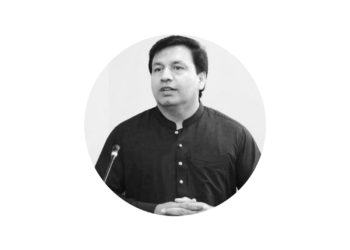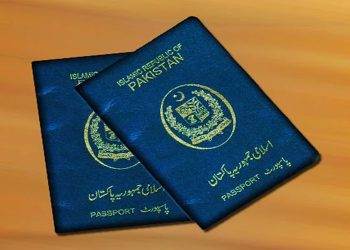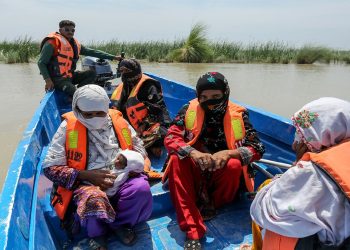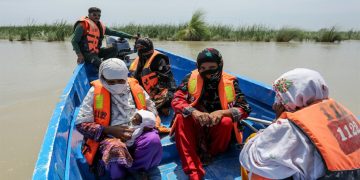Political instability is the propensity of a government collapse either because of conflicts or rampant competition between various political parties. Also, the occurrence of a government change increases the likelihood of subsequent changes. The economy of Pakistan has been badly damaged by political instability in the country. Politically, however, the interplay of religious fundamentalism, sectarianism, ethnic cleavages and regional economic disparities has made the country volatile and unstable. Various East Asian countries that were behind Pakistan in the 1960s have surged far ahead in most economic and social indicators. Pakistan has thus been unable to realize its potential. Much of the near-term economic instability has been driven by a global commodity price boom.
However, it is important to recognize that inflationary storm engulfing Pakistan is far more significant than in other peer economies. Much of this disparity has to do with a lack of forward-looking agricultural policies in Pakistan and dysfunctional markets in key commodities like wheat, where the government intervenes across the value chain. This change of tone is not limited to the economy.
Speculation about civil-military tensions, opposition party protests and growing terrorism in Pakistan’s northwestern regions bordering Afghanistan are further complicating the situation. These developments are threatening to create the perfect storm that may significantly erode Prime Minister Imran Khan’s chances of reelection in the 2023 general elections.
A comparison of Pakistan‘s economic performance during different regimes shows that macroeconomic fundamentals tend to show an improvement during the autocratic regimes compared with those prevailing during democratic regimes. In particular, periods of autocratic regimes are typically characterized by low inflation, robust growth and low level of bureaucratic corruption due to better governance.
In contrast, economic performance during the democratic regimes has been observed to worsen with weak governance and high levels of corruption, inflation due partly to reliance on seignior age to finance public spending, and lackluster growth. Despite its enormous economic resources, Pakistan’s economy remained under dark shadows during most of its historical discourse.
The economic indicators describe a significant relationship between politics and the economy of Pakistan. Political instability flourished corruption and reduced economic growth of the country. Moreover, a weak political system and government institutions could not resist the political tension in the country. Political instability reduces economic growth and economic growth reinforces political stability in the country.
The rising political temperature in Pakistan in recent days is a predictable part of a larger pattern. A combination of issues of misgovernance, skyrocketing prices of essential commodities, inflated utility bills, and, most importantly, the selective accountability have brought the opposition parties together.
Pakistan has experienced an unenviable history of alternation between democratic and military regimes. Worse still, the political regimes have also oscillated from periods of relatively genuine public representation to a quasi-democracy and sham democracy, and many shades of grey. No Pakistani prime minister has ever completed his or her term in office.
The opposition parties have been crying foul since the 2018 elections. Ever since the incumbent government took office, national economy has suffered many setbacks even before Covid-19 struck the economy had not looked good. According to the data collected by the World Bank, Pakistan’s per capita gross national income was around $1,530. In a sample of around 200 countries, only 38 countries had smaller per capita income than Pakistan’s. Most of these economies were concentrated in Sub-Saharan Africa. Pakistan has one of the highest child mortality rates in the world.
Pakistan’s under-5 child mortality rate is around 70 per 1,000 live births. In a sample of 193 countries, only 21 countries performed worse than Pakistan on this count. Pakistan’s average life span is 67 years. Out of 203 countries, 155 countries had longer life expectancy. A nation’s priorities are reflected in the quality of two basic service structures such as health and education.
Health and education sectors require considerable resources to achieve a minimum level of efficiency. Pakistan’s military expenditures were over 4.05 percent of GDP in 2018. Only nine countries spent more than Pakistan on their military capability. Most of these nine economies were oil-rich Gulf States and Israel.
As against per capita income of these countries, per capita income of Pakistan was $1,590, which is just 5% of Kuwait’s per capita income. No country in the world had per capita income as low as $1,500, and spent more than Pakistan on its military capability. Even if it is hard to suggest that Pakistan’s abject situation is the exclusive result of political instability, there is massive evidence to suggest that the underdevelopment of a country is inextricably linked with and rooted in its political instability.
The government at any given time directly controls no more than 20% of GDP while 80% is controlled by the private sector. Yes, it is true that government does influence private-sector responses through its policy stances, regulations, taxation and provision of infrastructure and human capital. Except for state-owned enterprises (SOEs) most farms, firms and businesses belong to the private sector. Their ways of thinking and decision-making are, therefore, equally crucial.
External conditions are also important as imports and exports of goods and services, workers remittances, foreign direct investment, and net external financial flows account for more than half of GDP. Therefore, what happens to the global economy – international trade, financial markets, migration – makes a huge difference to domestic economic outcomes. The core economic issues are development planning, unemployment, poverty, income distribution, economic growth, inflation, trade and deficits, public debt and sectorial imbalances.
Political instability is likely to shorten policymakers’ horizons leading to sub-optimal short term macroeconomic policies. It may also lead to a more frequent switch of policies, creating volatility and thus, negatively affecting macroeconomic performance. In countries affected by political instability, there is a lack of continuity in critical public policies.
Political governments are haunted by uncertainties about the completion of their stints. Succeeding governments rarely own flagship projects of the predecessor government. The bottom line is that Pakistan needs political stability more than any other thing because economic wellbeing and external security are the outcome of political stability. Also when an economy becomes unstable, there is inflation, which is a decrease in the value of money. This leads to higher prices, higher unemployment, and general angst among consumers and businesses that are trying to survive financially.
Governments can raise or lower corporation tax, which will impact on profits. They can also affect businesses by increasing value-added tax on products or business rates. They can bring in new laws like the national minimum wage, which impacts on profits and employment rights.






























